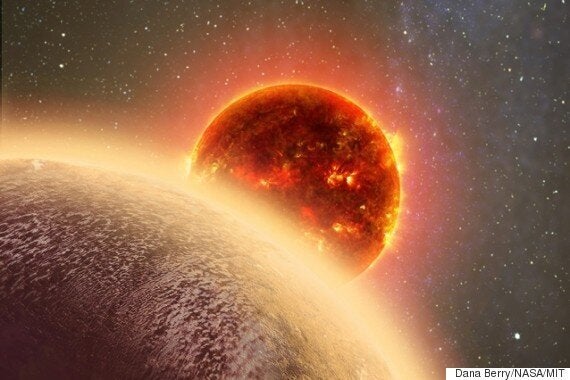Astronomers who have found a rocky planet orbiting a nearby star say the discovery could be an important step forward in the search for extraterrestrial life.
The exoplanet, dubbed GJ 1132b, is close enough for experts to better understand the different types of atmospheres that could support life.
Describing the rocky world in paper published in Nature, researchers say GJ 1132b is 1.2 times larger than earth, housed in a solar system that is approximately 39 light years aways from earth.

According to the measurements made so far, the planet's density is similar to Earth's and although researchers have concluded that the planet is too hot to be habitable, it is cool enough to support a "substantial atmosphere."
“If we find this pretty hot planet has managed to hang onto its atmosphere over the billions of years it’s been around, that bodes well for the long-term goal of studying cooler planets that could have life,” said said co-author Zachory Berta-Thompson, from the Massachusetts Institute of Technology's Kavli Institute in the US.
“We finally have a target to point our telescopes at, and [can] dig much deeper into the workings of a rocky exoplanet, and what makes it tick.”
SEE ALSO:
- NASA's Kepler Space Telescope Has Discovered 'Earth 2.0'
- NASA Kepler-452b 'Earth 2.0' Discovery Brings Us Closer To Discovering Alien Life
- NASA's Kepler Telescope Has Potentially Found 'Another Earth' On The Other Side Of The Milky Way
- NASA's Kepler Spacecraft Discovers Eight New Earth-Like Exoplanets In 'Goldilocks Zone'
Astronomers say the find is significant largely because most earth-sized exoplanets, which are the ones most likely support signs of life, are too far away to study.
Berta-Thompson added: "We think it’s the first opportunity we have to point our telescopes at a rocky exoplanet and get that kind of detail, to be able to measure the color of its sunset, or the speed of its winds, and really learn how rocky planets work out there in the universe.
"Those will be exciting observations to make.”
The discovery was made using the MEarth-South telescope array, located on Cerro Tololo in Chile.